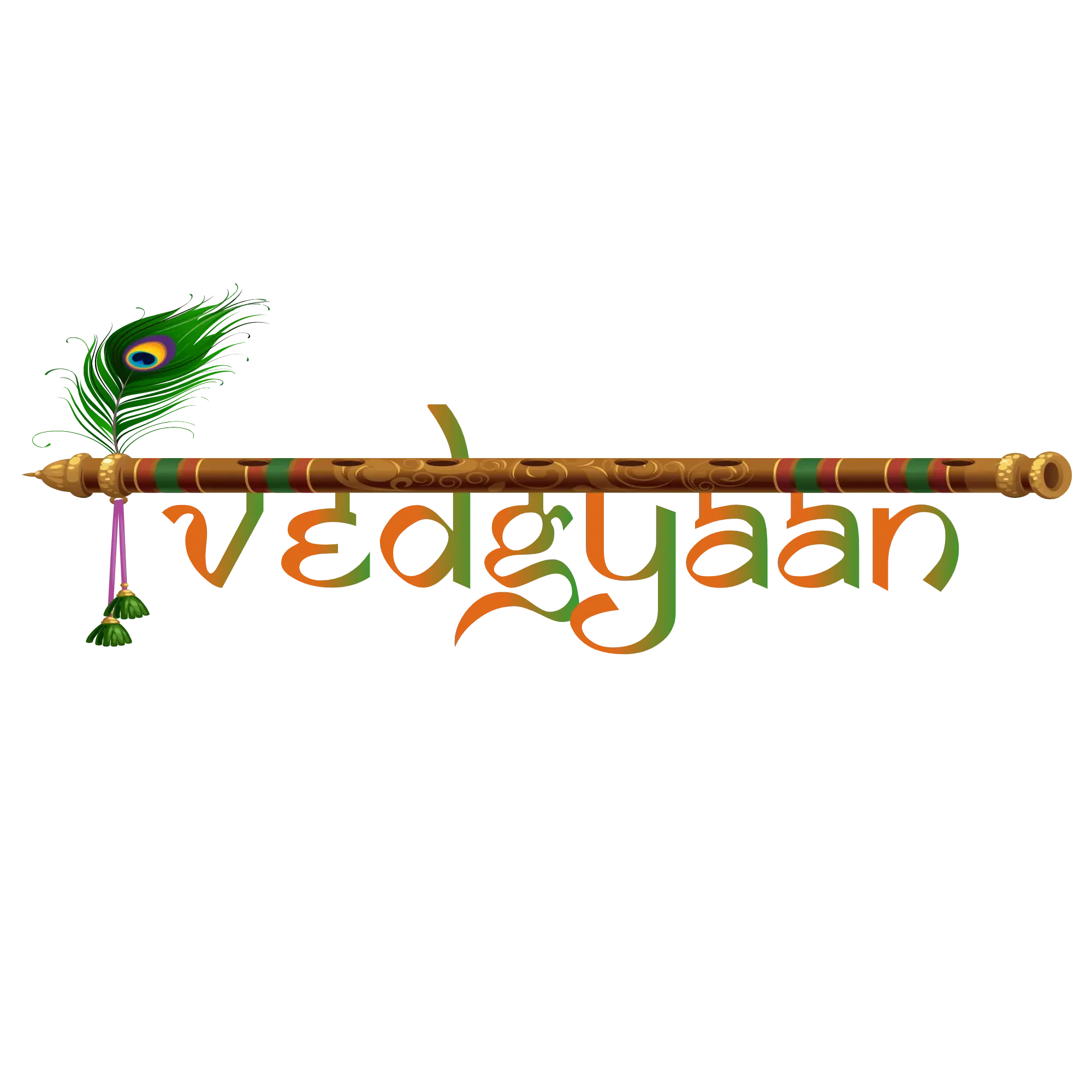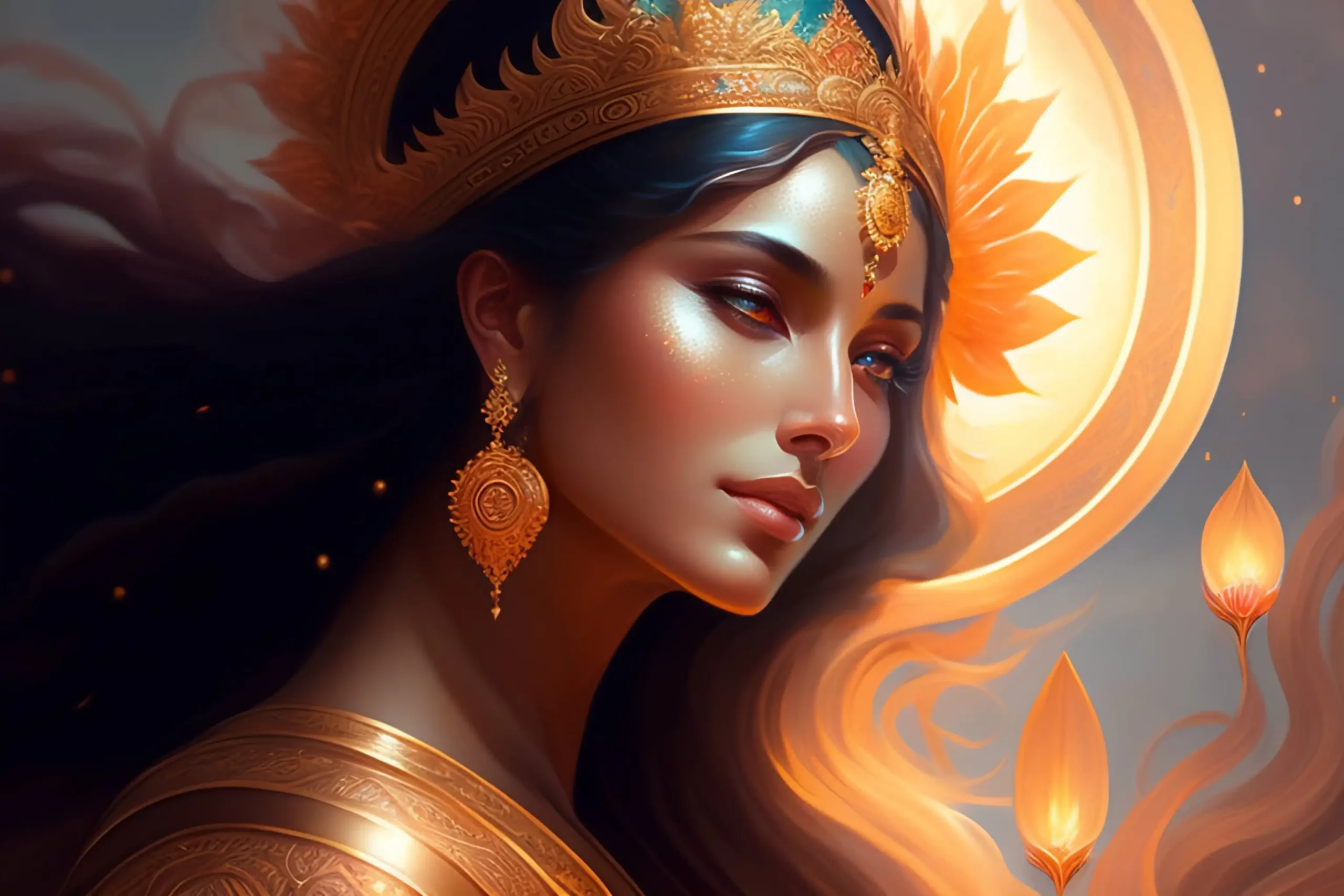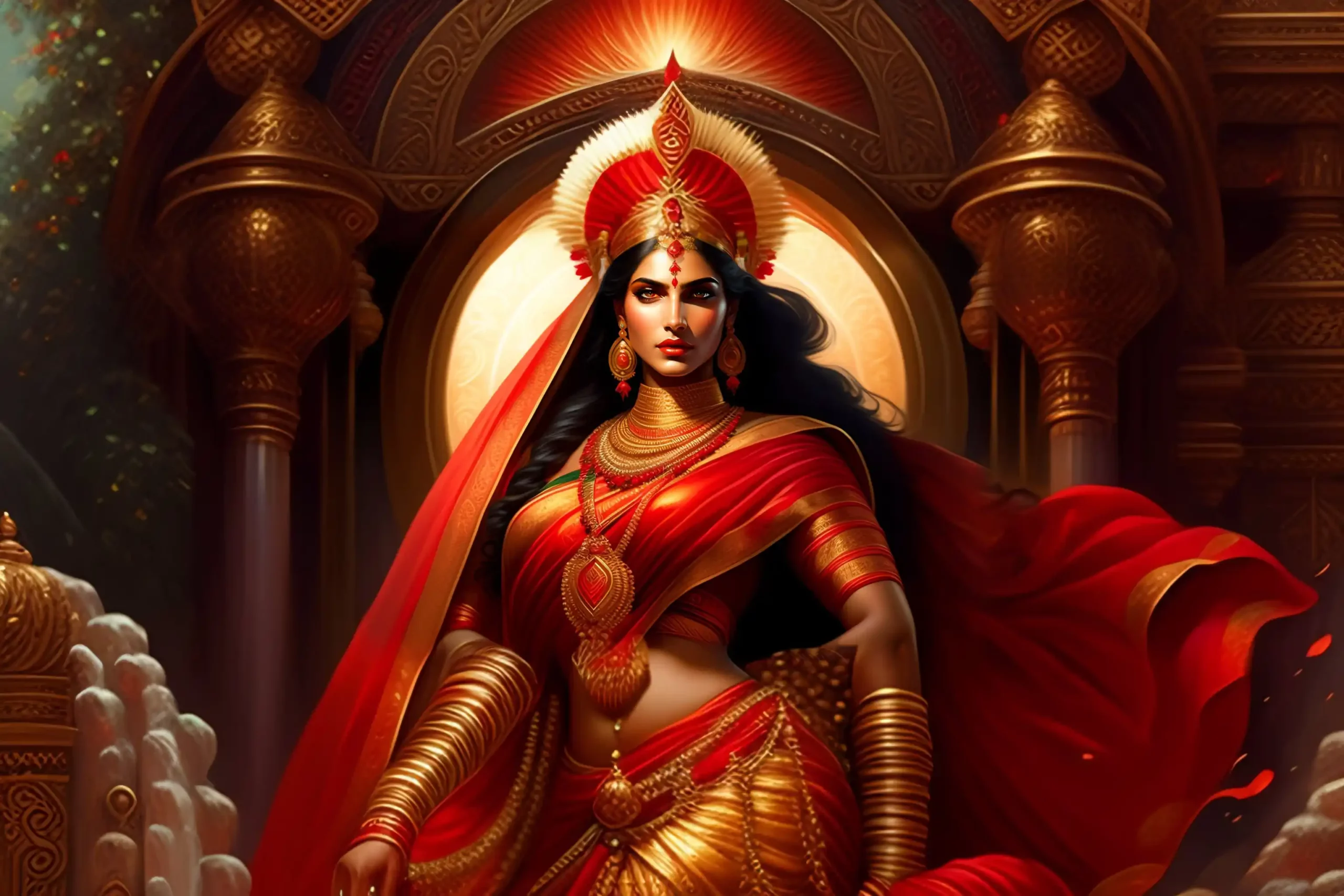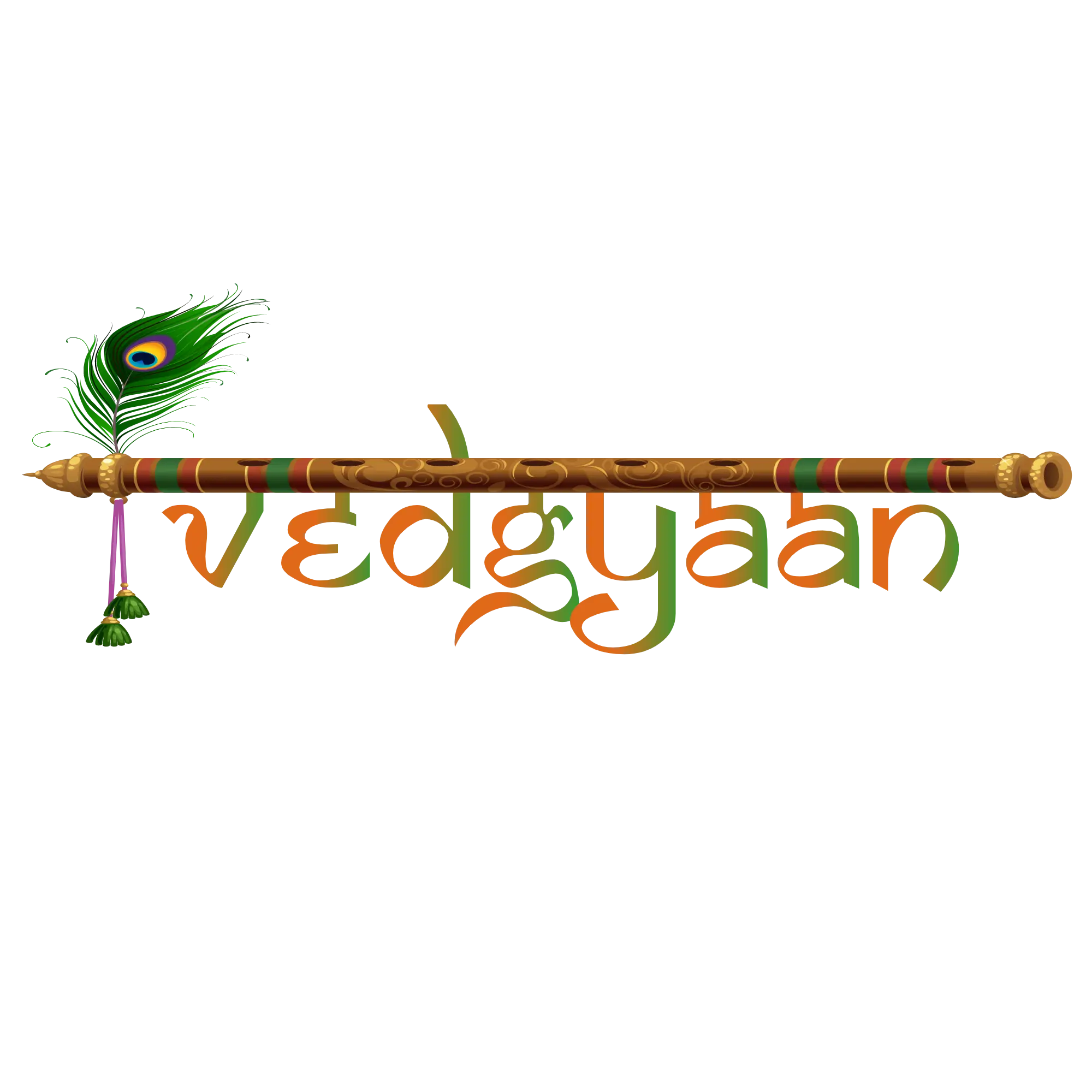Behold Durga, the fierce protector, a mother of unsurpassed radiance and tranquility, yet brimming with the ferocity and triumph of Indra himself. She embodies the very essence of society’s ideal mother and warrior, vanquishing her foes with but a single breath and silencing them with a mere glance. As unyielding as steel and as powerful as an ox, she stands as the ultimate warrior and master of chaos, a paragon of inspiration urging readers to contemplate their purpose, champion the greater good, and make it their mission to rid the world of all that is wicked.
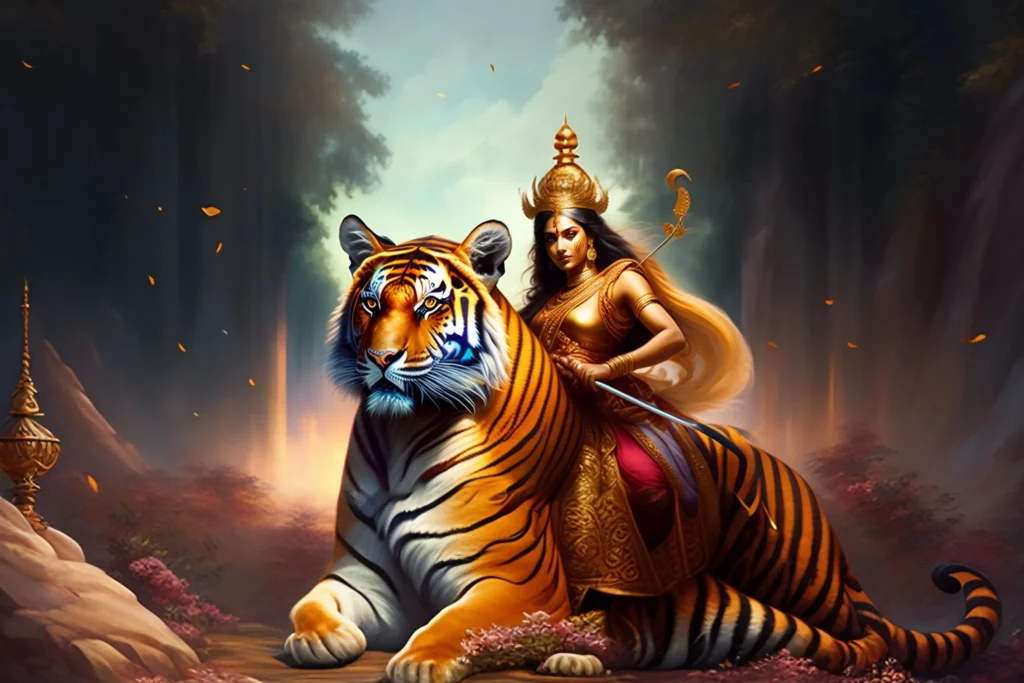
© Vedgyaan.com
Who is Durga?
Durga is the Hindu Goddess of War, Protection, and Strength. As a manifestation of Goddess Parvati, Durga is a true champion of Dharma (righteousness) and is revered for her ability to vanquish evil and demonic forces.
When it comes to fierce and warrior-like forms, none compare to Durga, who is known to bring freedom and liberation to those who are oppressed. With her celestial rage, she fearlessly takes on the forces of evil and proves to be stronger than any man. She is a protector of the earth, having slain the most formidable demons in the universe to ensure death and destruction are kept at bay.
As one of the most prominent Goddesses in the Shaktism sect of Hinduism, Durga is regarded as a motherly figure and is believed to embody Shakti, the divine energy that governs the universe. Though she exudes ferocity with every move, Durga is always depicted with a kind and peaceful face, symbolizing her protective nature. She is fierce not out of hatred or evil, but out of necessity – to safeguard the weak, liberate the oppressed, and uphold righteousness.
Epithets: Popular Names of Goddess Durga
Goddess Durga is known by a multitude of names, each of which encapsulates a particular attribute or quality. The name Durga is derived from the Sanskrit word Durg, meaning invincible or difficult to defeat.
- Deveshi
In the realm of Shaktism, Durga is regarded as the supreme godhead of the universe and the embodiment of Shakti herself. As a result, Durga is also referred to as Deveshi, which translates to ‘the supreme one among the goddesses’.
- Shaila
Durga represents the warrior aspect of Goddess Parvati, who was the daughter of Himavan, the personification of the Himalayas. Consequently, Durga is also known as Shaila, meaning ‘she of the mountains’.
- Vamika
As an incarnation of Parvati, Durga was also the consort of Lord Shiva. In his Ardhanarishvara form, Lord Shiva is depicted as half male and half female, with the female half representing Parvati or Durga. Thus, Durga earned the name Vamika, which means ‘the one forming the left half of Lord Shiva’s body’.
- Nitya
Transcending time and space itself, Goddess Durga is said to have no beginning or end but rather exists for eternity. Therefore, Durga is commonly referred to as Nitya, which directly translates to ‘eternal’ or ‘everlasting’.
Origin of Durga
Durga’s birth was prophesied to be the one who would rid the world of evil and demonic forces. Mahishasur, a powerful Asura, was a half-buffalo and half-demon who sought dominion over the earth and the Gods. After receiving a boon from Lord Brahma that made him undefeatable by any man or God, he unleashed his terror on the world, causing widespread destruction. The Gods, defeated in a great war, sought to create a woman powerful enough to destroy him. With their combined divine energy, they created Durga, a formidable warrior armed with celestial weapons and a tiger to ride on. She set off to confront Mahishasur, her sole purpose to rid the world of his evil reign.
The Epic Battle: Durga’s Triumph Over Mahishasura
As Goddess Durga approached the kingdom of Amravati, she let out a deafening roar that shook the very earth beneath her. Mahishasur, confused by the source of the sound, sent his army to investigate. When they approached Durga, she firmly declared that she had come to kill Mahishasur. The demon king scoffed and offered to marry her, but when she rejected him, his rage boiled over.
Mahishasur transformed into a handsome young man to try and trick Durga, but her resolve was unshakable. Furious, he ordered his army of demons to attack her. Durga, armed with her celestial weapons, defeated the army with ease, leaving Mahishasur stunned.
A fierce battle between Durga and Mahishasur lasted for nine days. The demon king threw everything he had at her, but Durga, powered by her divine strength, remained unyielding. With her weapons, she struck him again and again, until finally, Mahishasur transformed into a great bull. But even in this form, he was no match for Durga. She decapitated him with her Chakra, vanquishing the demon and freeing humanity from his tyranny.

(Public Domain)
As the dust settled and the battle ended, Durga stood victorious, a symbol of the triumph of good over evil. Her strength and power had saved the world from destruction, and she would forever be remembered as a divine protector and defender of righteousness.
Iconography: What does Goddess Durga look like?
Draped in a fiery red saree and adorned with weapons of the celestial Gods themselves, Goddess Durga is often portrayed with eighteen arms, each wielding a weapon of destruction or creation. Her image embodies her status as the Supreme Goddess.

(Public Domain)
Despite being the ultimate warrior, Durga is always depicted with a serene countenance, even amidst the chaos of war or while slaying demons. This depiction is a testament to her role as the protector and her fight for the greater good.
Each of Durga’s weapons holds a deep meaning and represents a different aspect of her timeless character. The Chakra symbolizes self-discipline, the conch symbolizes service to others, the bow symbolizes introspection, the arrow symbolizes prayer, and the sword symbolizes devotion.
Durga is often depicted riding on the back of a lion or tiger as her divine vehicle. In the Vaishnavism sect of Hinduism, Durga is considered to be an incarnation or one of the three forms of Goddess Lakshmi, the deity of wealth and prosperity. In such depictions, Durga is shown riding on a majestic lion, adding to her regal and divine aura.
The Navdurga: Nine Manifestations of Durga
According to Hindu mythology, Goddess Durga has nine powerful forms or manifestations collectively known as the Navdurga. These forms include Shailaputri, Brahmacharini, Chandraghanta, Kushmanda, Skandamata, Katyayani, Kaalratri, Mahagauri, and Siddhidhatri.
- Shailaputri
Shailaputri is the incarnation of Goddess Sati and was born to the King of the Himalayas in the form of Parvati. Also known as Bhavani or Hemavati, this two-armed form of Durga has a crescent moon on her forehead.
- Brahmacharini
Brahmacharini is derived from the Sanskrit words “Brahma,” meaning absolute reality, and “Charini,” meaning behavior or conduct. She is the Goddess of penance and worship and the female aspect of a Brahmacharya. She is depicted walking barefoot while clutching prayer beads in her right hand and a water pot in her left hand.
- Chandraghanta
Chandraghanta is one of Durga’s most powerful forms, bestowing courage and bravery upon her devotees. She is depicted with ten hands, a bell-shaped half-moon on her forehead, celestial weapons, prayer beads, and a water jug. Legend has it that the sound of her moon bell rids the world of demonic forces.
- Kushmanda
Kushmanda’s name is derived from “Ku,” meaning a bit, “Ushma,” meaning warmth or energy, and “Anda,” taken from the last three letters of the Sanskrit word “Brahmand,” which means the universe. Kushmanda is known for her ability to live inside the Sun and is said to have created the universe by flashing her smile. She is also known for bestowing great strength and powers upon her devotees.
- Skandamata
Skandamata is the mother of the God of War, Skanda, and is also widely revered as the “Goddess of Fire.” She is always depicted carrying infant Skanda in her lap and is portrayed with four hands, clutching lotus blossoms in her upper two hands. She sits on a lotus bloom and is also known as Goddess Padmasana.
- Katyayani
Katyayani manifested herself as the daughter of sage Katyayana to help the devas obliterate the evil presence of Mahishasura. She is known for her displeasure, retaliation, and extreme triumph over the Asuras. She gives shelter and grants boons to those who love and adore her with an unadulterated heart.
- Kalaratri
Kalaratri is the fiercest and most brutal form of the Mother Goddess and is known for her ability to obliterate the Asuras Sumbha and Nisumbha. She is depicted with four hands, black skin, and riding on a donkey- her divine vehicle.
- Mahagauri
Mahagauri is known as the Goddess of virtue and cleanliness. She has a dazzling, white complexion and is depicted with four arms, carrying a Trishul in one hand. The one who satisfies her will have all their flaws, faults, and mistakes burned to ashes and will be redeemed by her grace.
- Siddhidatri
Siddhidhatri is the remover of ignorance and the provider of knowledge. She is the Goddess of knowledge, awareness, and achievement and is depicted with four arms, always sitting on a lotus. She rides on a tiger and holds a Chakra in her hand.
Significance in Hinduism
Durga, the fierce mother goddess and the embodiment of Shakti, holds immense significance in Hinduism. Widely worshipped by devotees as the Mother of the Universe, she is believed to be the most powerful being in existence, with her power extending to all the Gods and Goddesses.
Hindus revere Durga as the deity of courage, victory, and strength, and seek her blessings before heading into battle, be it a great war or a small obstacle. Pure-hearted devotees who worship her are said to receive boons and victory in their endeavors. Parents also pray to Durga for the safety of their children, as she is considered to be the protector Goddess and is said to look after their health, well-being, and success. Her omnipotent and benevolent nature makes her an essential part of the Hindu pantheon.
Durga Puja: Celebrating Goddess Durga
Durga Puja is one of the most significant and widely celebrated festivals in Hinduism, particularly in the eastern part of India. It is a ten-day festival that commemorates the victory of the Goddess Durga over the demon Mahishasura, marking the triumph of good over evil. The festival is celebrated with great pomp and show, and the preparations begin months in advance.
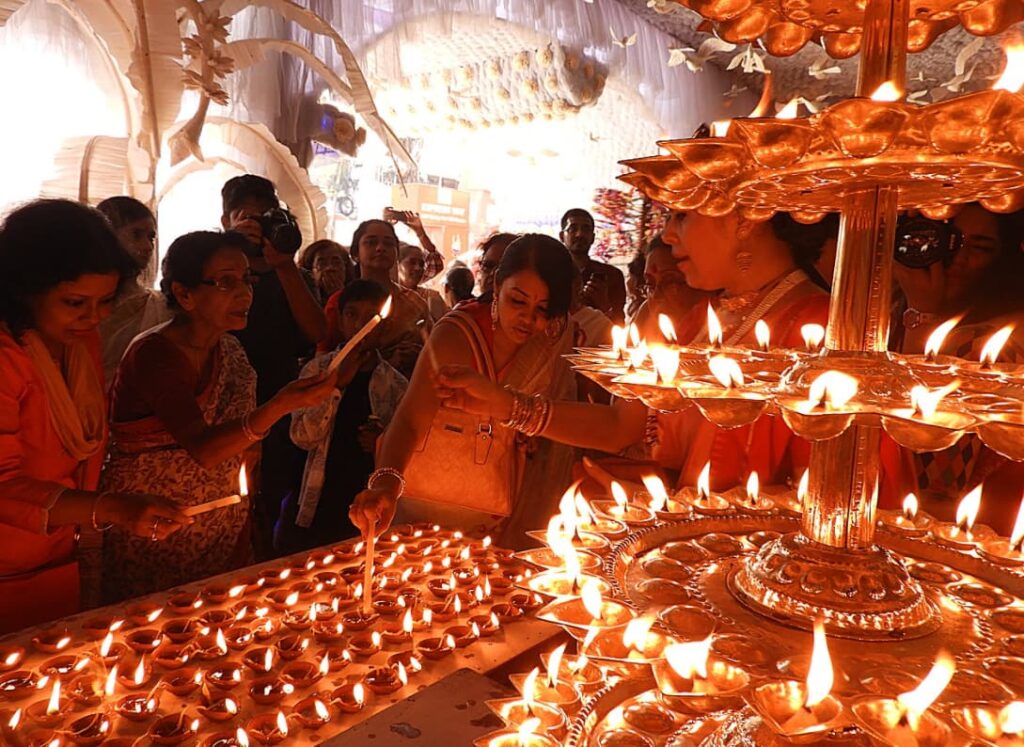
(Public Domain)
During Durga Puja, beautifully decorated pandals or temporary structures are erected in public places where life-sized idols of the Goddess Durga and her children are placed. The idols are intricately crafted and adorned with elaborate jewelry and clothing. The pandals are also decorated with colorful lights and elaborate art installations, making the entire city come alive with festive fervor.
The final day of Durga Puja, known as Vijayadashami, marks the culmination of the festival. It is a day of great significance as it is believed that on this day, the Goddess Durga defeated the demon Mahishasura. The idols are taken in a grand procession through the streets, accompanied by music and dance, before being immersed in water bodies, symbolizing the return of the Goddess to her heavenly abode.
Durga Puja is not just a religious festival but a celebration of culture and tradition. It is a time when people come together to celebrate the triumph of good over evil and to embrace the rich cultural heritage of India. The festival is a testament to the unity and diversity of the Indian people, and its significance is felt not just in India but across the world by people of Indian origin.
Legacy
Durga’s influence extends beyond Hinduism and has also been observed in other religions. In the Japanese form of Buddhism, Goddess Durga has been adopted as ‘Butsu-Mo’, the protector Goddess. In Tibet, she appears as ‘Palden Lhamo’, a fierce warrior goddess.

(Public Domain)
Within Jainism, Durga is represented as ‘Sacciya Mata’ – a powerful goddess of war who has been portrayed riding a lion on the walls of historical Jain temples and monasteries. However, despite her fierce warrior appearance, she is always depicted as a peaceful deity.
In some regions of Southeast Asia, Durga is worshipped as a fertility goddess, and her presence is believed to bring abundant crops and blessings to the land.
Durga’s legacy also extends beyond religious significance, and she has been a symbol of women’s empowerment and strength. Many women in India look up to Durga as a role model for her fierce and powerful nature, and the festival of Durga Puja is also a celebration of femininity and female strength. Durga’s influence in popular culture is also evident, with her appearance in books, movies, and other media, both in India and around the world.
